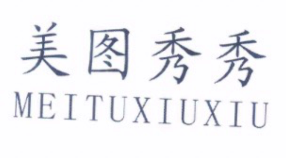This is the last guest post in a 4-part series regarding Chinese well-known trademarks by Yan Zhang, Feifei Bian & Austin Chang of Beijing East IP. The first part is available here, the second here, and third here.
In Part III of this series, we selected our representative cases to further illustrate how the courts apply well-known mark recognition and extend the scope of protection for a well-known mark. In Part IV, the finale of our well-known mark recognition in China, we would like to share with you our insights on how to collect evidence for well-known mark recognition for goods and service in the software and internet industry. Collecting evidence for intangible items is already demanding. Collecting evidence for intangible items for well-known recognition is even more challenging but possible.
- “PHOTOSHOP” v. “photoshop”
Beijing Liantuochuangxiang Technology Development Co., Ltd. (“Liantuo”) applied for the “photoshop” mark (“Disputed Mark”) with App. No. 9329485 in Class 3 for “lipstick; nail polish; cosmetics; cosmetic pens; eyebrow cosmetics; perfume; eyebrow pencil; rouge; eye shadow cream; dyed lash oil” on April 12, 2011.
|
Disputed Mark |
Cited Mark |
 |
 |
Adobe owns a prior registration for the “PHOTOSHOP” mark (“Cited Mark”) with App. No. 573256 in Class 9 for “computer program.”
Adobe filed an opposition against the Disputed Mark on April 20, 2012 before the CNIPA. The CNIPA rendered a decision allowing the Disputed Mark to be registered. Unsatisfied, Adobe appealed but the CNIPA affirmed the Disputed Mark’s registration. Adobe filed an administrative appeal against the CNIPA before the Beijing First Intermediate Court. The court rejected Adobe’s appeal against the CNIPA. Adobe appealed to the Beijing High Court which, finally, ruled in favor of Adobe and ordered the CNIPA to reissue its decision.
In this case, the Beijing High Court found that Adobe submitted sufficient evidence in proving the Cited Mark enjoyed high fame through long-term and extensive promotion and use. For example, thousands of media reports from the People’s Daily, Guanming Daily, China Computer News, Computer World, etc. were submitted as evidence proving the Cited Mark enjoyed high fame. Adobe also submitted the various awards “PHOTOSHOP” received, such as “Computer World’s Annual Product Award” and “Milestone Product of China Information Industry 20 Years Award.” Adobe provided records of its annual certificate examination for “National Computer Application Technical Certificate for Photoshop 6.0” since 2001, as well as the number of “PHOTOSHOP” downloads from the Internet. Given the above, the court held that Adobe’s evidence met the criteria to recognize the “PHOTOSHOP” mark as a well-known mark.
Considering that the Cited Mark had strong inherent distinctiveness and the Disputed Mark was identical to the Cited Mark, the court found that the Disputed Mark was a copy of the Cited Mark. Although the Disputed Mark’s designated goods for “lipstick” had certain variance with the Cited Mark’s approved goods for “computer program,” the relevant consumers for the two marks would still overlap. After comprehensively considering the above analysis, namely, the Cited Mark had inherent distinctiveness, enjoyed high fame, the two marks were identical, the court concluded that the Disputed Mark’s designated goods for “lipstick” was likely to weaken the close association between the Cited Mark and its approved goods for “computer program,” dilute the Cited Mark’s distinctiveness, and damage Adobe’s interests.
- “Mei Tu Xiu Xiu and MEITUXIUXIU” v. “Mei Tu Xiu Xiu”
An individual Rongxiong BEI applied for the “Mei Tu Xiu Xiu and MEITUXIUXIU” mark (“Disputed Mark”) on April 19, 2013 with App. No. 12454059 in Class 3 for “detergent; grinding paste; rose oil; toothpaste; dried petal and perfume mixture (perfume); animal cosmetics; air fragrance; cosmetics; shampoo; shoe polish,” and the Disputed Mark was approved for registration on September 28, 2014.
|
Disputed Mark |
Cited Mark |
 |
 |
Xiamen Meitu Technology Co. (“Meitu”) applied for the “Mei Tu Xiu Xiu” mark (“Cited Mark”) on December 8, 2008 with App. No. 7099841 in Class 9 for “optical disk; information processor (central processing unit); computer software (recorded); electronic dictionary; recorded computer program (program); computer; computer program (downloadable software); network communication equipment; electronic sound device with books; magnetic data medium,” and was approved for registration on October 14, 2010.
Meitu filed an invalidation against the Disputed Mark with the CNIPA on July 24, 2015. Upon adjudication, the CNIPA held that the Disputed Mark shall be invalidated. BEI appealed to the Beijing IP Court. The Beijing IP Court rejected BEI’s appeal. BEI then appealed to the Beijing High Court. The Beijing High Court affirmed the CNIPA’s decision and ruled in favor of Meitu. BEI, still unsatisfied, petitioned to the Supreme People’s Court for retrial but the petition was rejected.
In its decision, the Beijing High Court found that prior to the Disputed Mark’s application date, the Cited Mark had occupied a rather large market share and covered wide range of regions for sales through long-term, extensive, and continued promotion and use on its approved goods for “computer software (recorded), recorded computer program (program), computer, etc.” The Cited Mark constituted as a well-known mark because it had been known to the relevant public and enjoyed high fame.
The court reasoned the Cited Mark consisted of four Chinese characters “Mei Tu Xiu Xiu” that did not have particular meaning and had inherent distinctiveness. The Disputed Mark was a copy and imitation of the Cited Mark because the Disputed Mark’s distinctive part was identical with the Cited Mark. Although the two marks designated goods in difference classes, the relevant consumers and target consumers overlapped. Considering the Cited Mark was a well-known mark and that the Disputed Mark’s distinctive part was identical to the Cited Mark, the relevant consumers were likely to be confused regarding the relationship between the two marks when purchasing the Disputed Mark’s designated goods. Such confusion would weaken the Cited Mark’s distinctiveness, unfairly exploit the Cited Mark’s market reputation, and damage the Cited Mark and Meitu’s interests.
- Analysis and Comments
As you may have reckoned, the photoshop and Mei Tu Xiu Xiu cases shared some similarity in that the courts recognized both cited marks as well-known marks on computer program related goods and gave cross-class protection against lipsticks and cosmetic related goods. The two focal points in these two cases are: 1) evidence collection for obtaining well-known mark recognition in connection with software application related goods, and 2) the association between disputed mark’s designated goods or services and cited mark’s approved goods or services.
- Evidence collection for obtaining well-known mark recognition mark designating software related goods
It is important to note not to apply Article 14 of the Chinese Trademark Law verbatim when collecting evidence for well-known mark recognition. Instead, consider utilizing relevant public’s understanding and recognitions on the marks and the goods involved. In the photoshop case, we supplemented large amount of evidence in the second instance trial to prove that the cited mark had reached well-known status prior to the disputed mark’s application date, including media reports, awards, rankings, sales records, Chinese brochures, China subsidiaries information, China and worldwide judicial and administrative adjudications, to name a few. Since Photoshop is a software, we particularly emphasized Photoshop’s versions, downloads, and user numbers, as well as other facts reflecting that Photoshop is now included in national certificate examinations, included as part of national computer examination, and used as teaching materials. We argued that Photoshop can be considered as well-known because it is included in the national computer application certificate examination and numerous people had taken such such exam.
Compare to foreign entities, domestic entities, such as Meitu, tend to have the up hand in collecting evidence originated from China. However, it is more challenging for internet companies than traditional companies collecting evidence for well-known mark recognitions considering the evidence are often intangible. When collecting evidence for Meitu’s cited mark, we collected large amount of use evidence, number of users, product sales records, promotional and advertisement records, and awards received to prove that the cited mark satisfied the well-known mark recognition threshold. For example, for use evidence, evidence of earliest use and software product update records were presented. For product sales records, revenue, profit, tax, sales agreements, collaborators, and regions that products bearing the cited mark covered were presented. Other evidence such as commercial and promotional agreements, fees, media reports, and the actual awards received were submitted as evidence proving the cited mark has reached well-known status.
The second instance court found that although Meitu’s profit between 2010 and 2013 was relatively low, profit was merely one of the many factors in determining the cited mark’s well-known status and fame. When determining whether a mark reached well-known status, the focus should be laid on the distinctiveness and well-known status of the cited mark on the approved goods, as well as the internet industry’s operation features, namely, software development and market promotion related investment would likely exceed profit at the beginning.
2. The association between disputed mark’s designated goods or services and cited mark’s approved goods or services
Often, it is difficult to prove the association between disputed mark’s designated goods or services and cited mark’s approved goods or services, especially when these goods or services are in different classes. For example, in the photoshop case, we submitted online media reporting that the approved goods, software, for Adobe’s “PHOTOSHOP” mark can provide various beautify functions and use visual aids during trial to detail how the relevant public use cosmetics prior to taking photos, and subsequently edit photos using the PHOTOSHOP software for beautify purposes to create better photos or pictures presentations. We argued that the disputed mark’s designated goods for “cosmetics” and the cited mark’s approved goods for “software” all carried the functions of beautify human’s faces or images. Thus, the target consumers overlapped and are closely related. Combining the above evidence with the “PHOTOSHOP” mark’s distinctiveness and fame, we further argued that the disputed mark’s registration and use would weaken the one-to-one and unique association between Photoshop and Adobe, dilute the distinctiveness of the well-known “PHOTOSHOP” mark, and damage Adobe’s interests.
